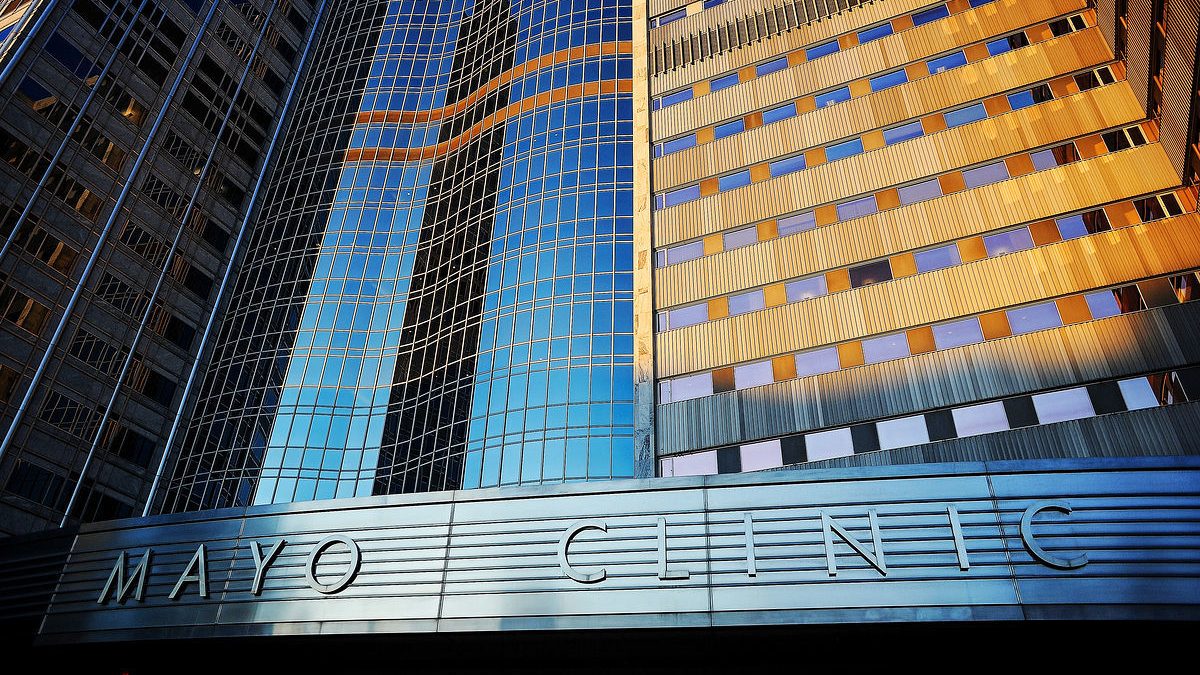
Mayo Clinic gives $10M to Rochester Public Schools, averting immediate budget crisis
ROCHESTER, Minn. — Rochester Public Schools received a $10 million donation from Mayo Clinic on Wednesday, erasing the district’s remaining budget cuts and paving the way for it to reverse course on many of the sweeping plans that would have redrawn the face of several of the city’s schools.
During a press conference announcing the donation, Mayo Clinic chief communications officer Halena Gazelka referred to the donation as a “bridge” for the district to “achieve greater financial sustainability.”
While the donation helps immediate funding issues for the district, RPS Superintendent Kent Pekel said the district will pursue another levy request in 2024 to put the district “on the path to financial stability” for years to come.
“If we do not succeed in asking our community to increase their targeted investment in Rochester Public Schools, we will be back here a year from now,” Pekel said. “(The referendum) is indispensable.”
Pekel called the donation an “extraordinary gift given at an extraordinary moment in the life of our community.”
“This investment from Mayo Clinic means RPS can avoid closing schools, raising class sizes and cutting programs,” he said in a written statement.
The changes
As a result, RPS will no longer propose closing Riverside Central Elementary. And Lincoln K-8, which had been slated to move into the Riverside building, will now remain in the same location it always has.
However, Riverside could still see some changes, as an updated district plan has the school becoming the new host for the Spanish immersion program. Currently, the district has Spanish immersion programs at Gage Elementary and Willow Creek Middle School. Under the new proposal, both counterparts of the program would move into Riverside, creating a continuous K-8 Spanish immersion program within a single building.
Moving the Spanish immersion program into Riverside would presumably help fill the building, which had seen declining enrollment throughout the years. That shrinking enrollment was the reason Riverside was selected as one of the schools for possible closure under the original plan.
The district’s new proposal does still include some changes to Pinewood Elementary and Mighty Oaks Early Learning Center, which were the two other schools scheduled for closure under the district’s initial plan.
Rather than closing, Pinewood Elementary would move into the empty half of Longfellow Elementary. In a press release issued in tandem with the district’s press conference, RPS said the two communities of Longfellow and Pinewood would “operate as two schools within the same building.”
Students of Pinewood Elementary would adhere to the traditional schedule it always has. Meanwhile, Longfellow Elementary would keep its unique 45-15 calendar, which means students attend school for 45 days, followed by 15 days of break.
Under its original proposal, the district had proposed discontinuing Longfellow’s unique calendar.
In turn, Mighty Oaks Early Learning Center would then move into the empty Pinewood Elementary building.
The revised plan from the district also included information about transportation. According to the update, the district’s portfolio of district-wide option schools will not have attendance areas of their own, meaning a student could live right next to a DWO school without automatically being “assigned” to that building.
However, the district’s new proposal says that the district-wide option schools would be “provided with transportation service within regions of the school district.”
One feature that is the same as the district’s original plan is the option for families to enroll their children in a neighborhood school that is not the one they would be assigned to based on their address. That means that if a family lives near one school but wants to attend a different school, they can opt to do so if that other school has space available and the family is willing to transport their own child.
The district’s updated plan also addresses a handful of other topics, including school-age child care, the district’s newcomer program and special education services.
The impact
Wednesday’s announcement is the latest update in a tumultuous season for the community of Rochester Public Schools.
The school district has spent the last two years cutting $21 million from its budget and was projecting that it would have to cut another $10 million — which was the basis for many of the changes it had proposed.
In November, voters rejected a request from the district for a $10 million-a-year referendum. Although the money from the levy would have been earmarked for technology-related needs, it would have freed up existing funds the district was already spending on technology that then could have been repurposed for other needs.
Voters rejected the district’s proposed levy request by a narrow margin. Not long after, the district announced its initial proposal of sweeping changes.
That, in turn, resulted in an outpouring of opposition from the students, parents and teachers of the affected schools.
In addition to having to close schools, the district was estimating that its proposed changes were only going to save approximately $3 million. That means the district was going to have to find a way to cut an additional $7 million.
The Mayo influence
Unlike the tumultuous season for RPS, Mayo Clinic donated in the wake of its own season of success and growing influence.
During her comments on Wednesday, Gazelka said Mayo wanted to invest in Rochester for multiple reasons. In the immediate sense, she said RPS supports Mayo by caring for the children of its workforce. In the long term, she said Mayo also sees the donation as an investment in the education of its future workforce, as the students may grow and eventually come to work for the clinic themselves.
“Strong performing schools set our kids up for long-term success, and are critical to the health and vibrancy of our community,” Gazelka said in the release. “This is an investment in seeing all kids reach their full potential, serving as a building block for our future workforce.”
In addition to the $10 million for Rochester Public Schools, Mayo Clinic also donated $4 million to the Coalition for Rochester Area Housing. Mayo Clinic had previously donated $4 million in 2017 to the founding Coalition partners. Mayo will also match donations to the Salvation Army Red Kettle Campaign in Rochester up to $100,000 on Dec. 22 and 23 and will contribute to The Landing MN.
On Nov. 28, the world-renowned clinic revealed plans to invest $5 billion in Rochester’s downtown core with the construction of six new buildings. Just two weeks later in December, the clinic officially opened its Anna-Maria and Steven Kellen building — an artistic structure that was the clinic’s first major real estate addition since the Gonda Building opened more than 20 years ago.
Although significant for Rochester Public Schools, the donation represents a small fraction of the Mayo Clinic’s overall revenue. In August, Mayo reported more than $4 billion in total revenue for the second quarter of the year.
“For Mayo to give us a vote of confidence in our academic agenda and invest in our students today so that we can make sure they have bright futures is a great feeling,” RPS School Board Chairwoman Cathy Nathan said. “I hope the community understands how lucky we are to have a superintendent and administrative staff who have really dug into these details so they could pivot this quickly.”
Related Articles
Gov. Tim Walz appoints Brad Lindsay to be commissioner of Veterans Affairs
Minnesota program to provide free school meals for all kids is costing the state more than expected
Proctor School District, family of former football player settle lawsuit over 2021 hazing incident
DLI investigation alleges Vikings Lakes contractors carried out wage theft
Plane breaks through thin ice on Minnesota ice fishing lake, 2 days after 35 anglers were rescued

